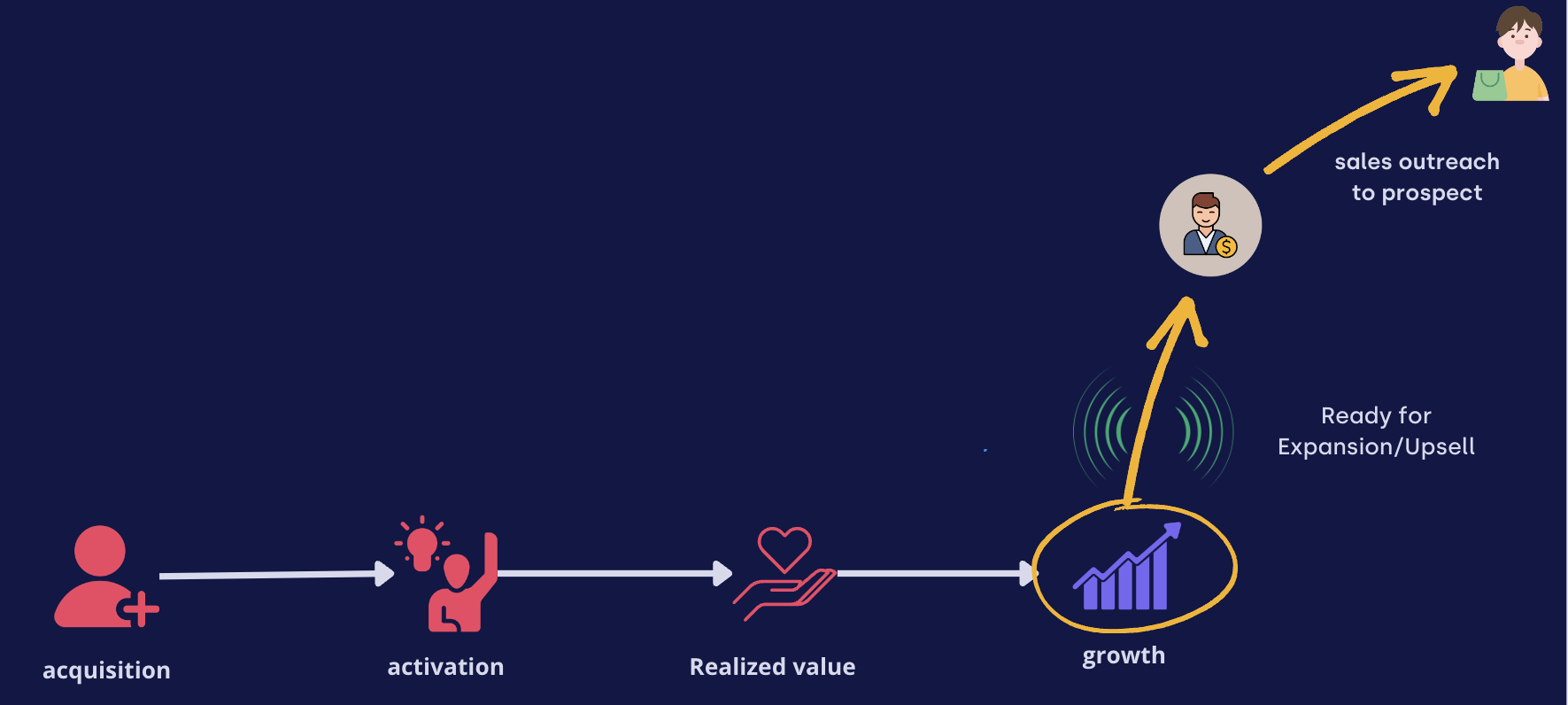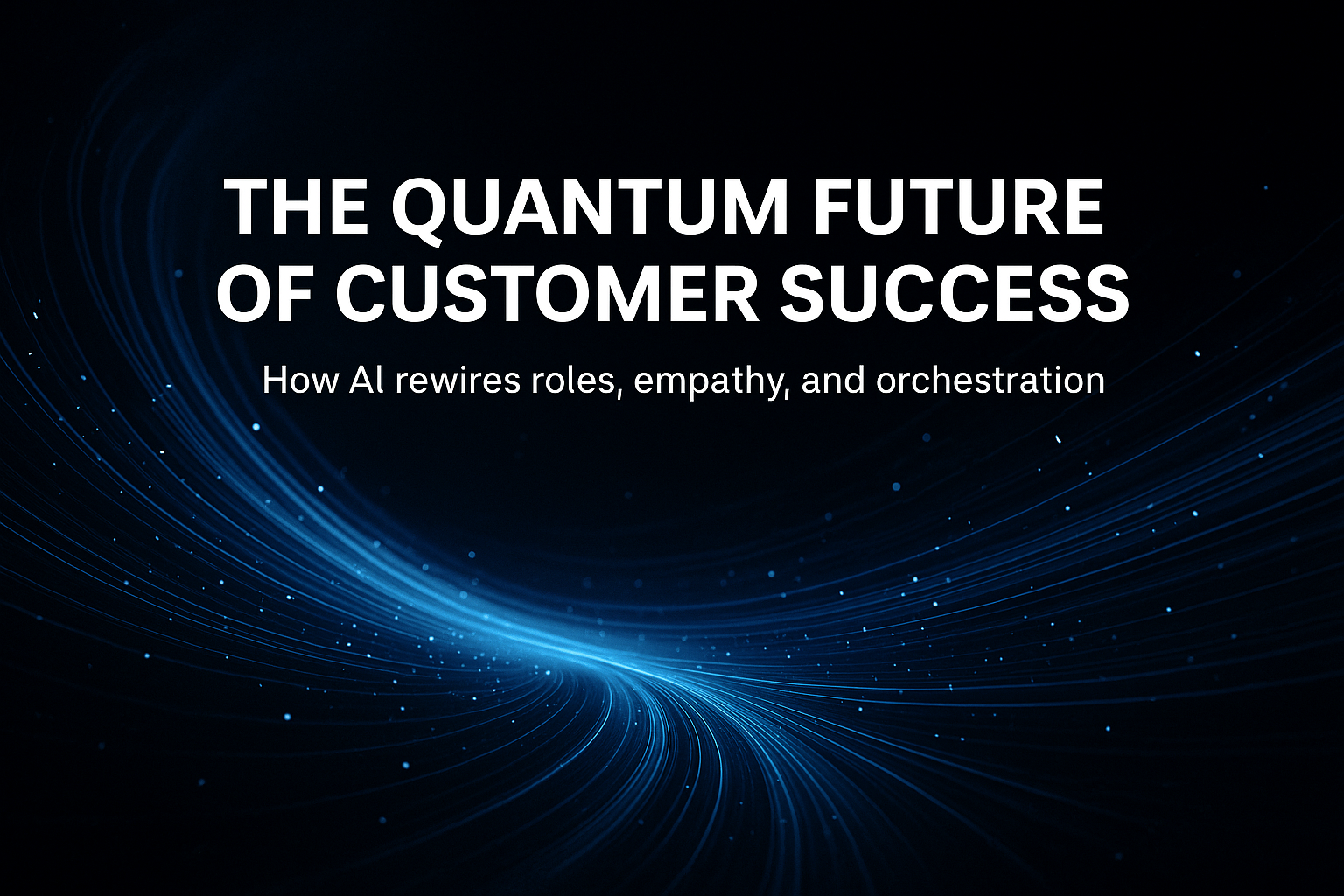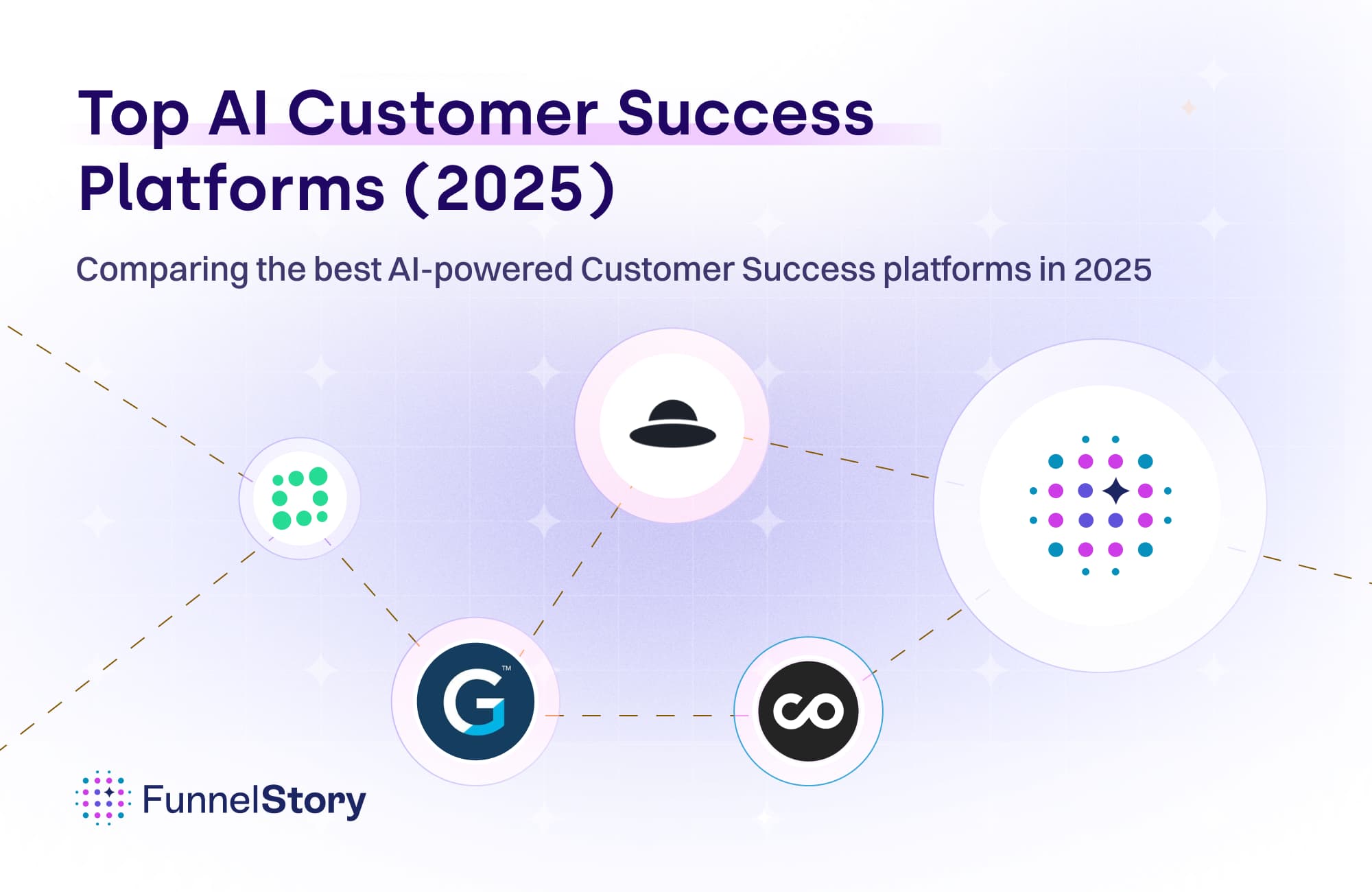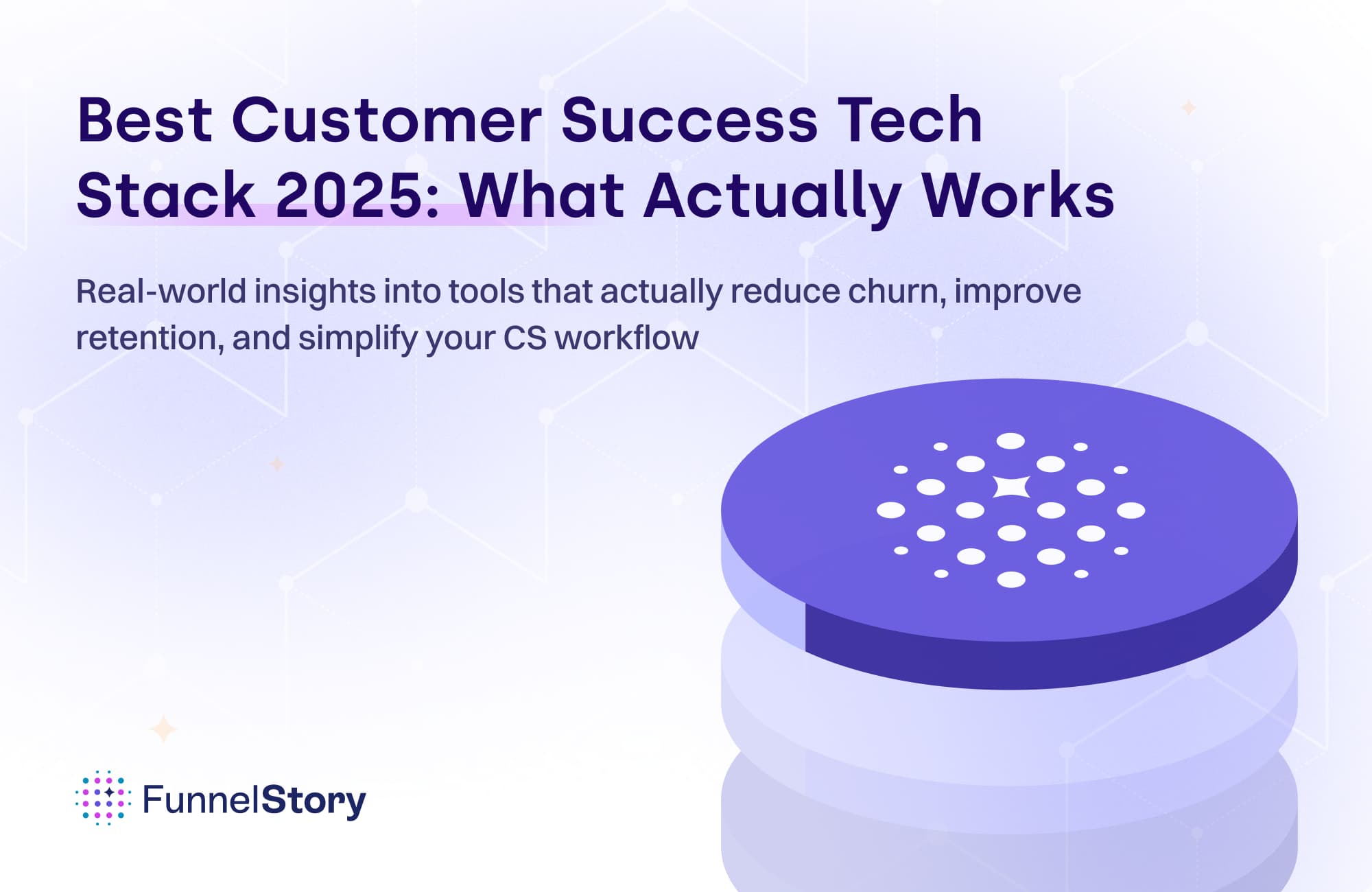In this article
Managing Product-led Customer Success 101
Effectively manage product led customer success with visibility, a multi-stage funnel, and product-driven engagement. Prioritize using revenue signals, qualify for sales outreach, create smart audiences, and review the funnel for optimization.

By Alok Shukla
Cofounder and CEO
Nov 16, 2023
4 min read
TL/DR: Effectively manage product-led digital customer success with visibility, a multi-stage funnel, and product-driven engagement. Prioritize using revenue signals, qualify for sales outreach, create smart audiences, and review the funnel for optimization.
A playbook for product-led customer success
Based on my conversations with fellow product, marketing, and sales leaders over the years, here is a playbook to manage product-led customer success:

Visibility into individual customer accountsOrganizing accounts based on their relative progress in an adoption funnelEngage and Nudge accounts towards the next funnel stagePrioritize accounts by revenue signalsQualify accounts for sales outreach for Upsell and ExpansionMarketing to customersPeriodic funnel review for optimization
Let us go through each one of them
Gain visibility over individual customer accounts
To effectively manage customer accounts gain visibility into individual customer adoption journeys. Create a timeline that tracks activities performed by users in various accounts. This can include in-product activities, conversations, referrals, support tickets, and more.
Tip:- Consider generating signals that represent key moments during the product adoption journey.
Organizing accounts based on their relative progress in an adoption funnel
Implement a multi-stage adoption funnel to track progress across accounts. This provides a singular view of the relative progress of all accounts.
A product adoption funnel is to product-led motion, what an opportunity funnel is to sales-led motion. You can adopt a popular funnel model such as pirate metrics, or you can custom design your own funnel.

To custom design your funnel, a good approach is to place onboarding activities in the earlier stages and end with growth (repeat) and loyalty/referral intent activities.
Engage and Nudge accounts towards the next funnel stage.
Even the most promising prospects may need guidance through the adoption funnel. Utilize various strategies simultaneously, including in-app onboarding, lifecycle conversations, weekly updates, and nudges.
In-app onboarding: Utilize available tools or implement onboarding within the product for a seamless first-time user experience.
Lifecycle conversations: Engage users through emails, in-app chat, or Slack to guide them through various stages, from sign-up to feature usage.
Weekly Updates: Provide regular updates on open tasks, achievements, or key metrics to keep users engaged.
Nudges: Behavioral nudges are the most powerful tool to advance an account in the product trial funnel.
Economist Richard Thaler originally introduced this concept of behavioral nudge, and it has now been successfully applied in the area of product design.
Identify customers by revenue risk signals.
Act on the identified revenue risk signals by delivering them proactively to the CS and Sales team. This can be achieved through email, Slack, or CRM updates.
A revenue risk signal represents a significant increase/decrease in (but not limited to)
Product usage# of users in an account# of support ticketsSupport ticket sentimentConversation sentimentFrequency of product engagement (e.g., daily to weekly/monthly), etc.License consumption

Deliver revenue signals pro-actively to the CS and Sales teams.
FunnelStory has built-in default health tags that automatically classify and tag accounts into opportunity, caution, or risk categories from getting to a renewal perspective.
A health tag aggregates individual revenue signals in a meaningful whole for CS/Sales teams.
Health Tags can be delivered to CS and sales teams through email, Slack, or by updating the CRM. Delivering revenue signals to CRM allows you to orchestrate predesigned sequences and workflows and perform task assignments.
Qualify accounts for sales outreach for Renewal, Upsell, Expansion and Cross-sell.
Often, a salesperson is overlayed on top of a product funnel to reach out to a product-qualified account.
Recommended - If a adoption funnel is active, an advanced stage can serve as a proxy for PQA. For those without a trial funnel, custom-design a PQA status based on key activities.

If an account becomes PQA, a deal/opportunity should be created in CRM and assigned to a salesperson; this deal/opportunity may contain additional product usage and signal information to help the salesperson craft their outreach.
Marketing to current customers
A smart audience can mean an active list of accounts depending on different stages of product adoption. It can also refer to cohort audiences based on firmographics, demographics, and behavior inside product trial funnels.

Analysis of the current customer base can help discover ideal customer profiles, which in turn can help a company optimize its marketing dollar spend by focusing on the audiences that matter.
With smart audiences, a marketing team can execute
Campaigns for driving renewal, upsell, expansion, and cross-sell campaigns
A campaign to entice accounts in the current funnel with a special offer
A campaign to invite selected prospects to an event or consider providing feedback/reference
Periodically review funnel for optimization.
A careful observation of slow/stuck accounts and activities performed by users in such accounts can help discover choke points in a product adoption funnel. These choke points can help you discover
Activities that are impeding conversions at specific stages of the product funnel.Effective Nudges to propel stalled/slow accounts forward
Conclusion
Implementing this streamlined playbook can significantly enhance the efficiency of managing customer success, leading to increased renewal, upsell, expansion, and cross-sell rates, and improved customer acquisition.




